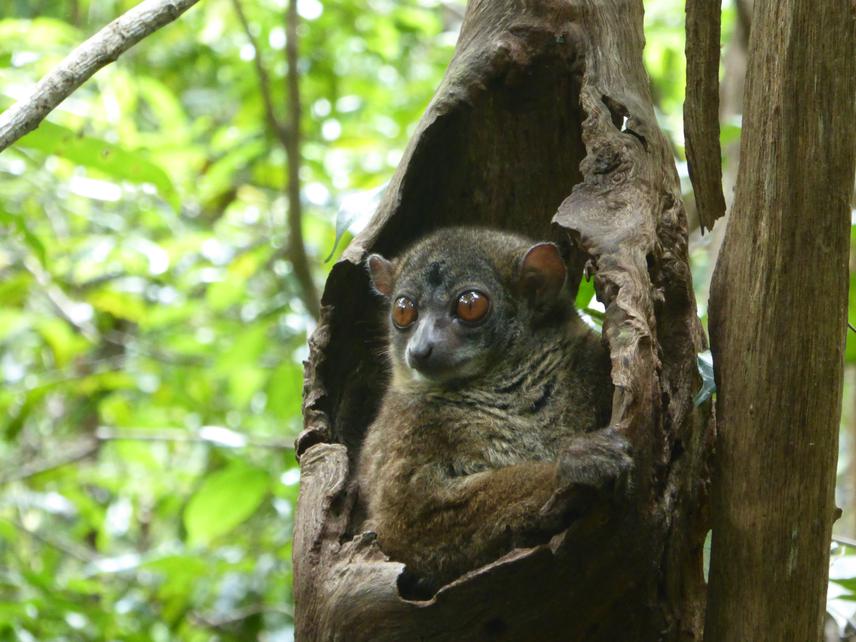Leslie Wilmet
This project focus on two threatened species of northwestern Madagascar: Lepilemur mittermeieri and Lepilemur dorsalis. We will identify their habitat use and niche characteristics as well as assess how they are affected by habitat degradation and fragmentation in order to endeavour to derive specific conservation guidelines for the genus.

Lepilemur mittermeieri in tree hole (sleeping site).
The genus Lepilemur is exemplary of the mammalian fauna of the island of Madagascar and is in urgent need of effective conservation measures. It is composed of 26 presently identified species that replace each other geographically. Some of those sportive lemurs located in remote areas are still scarcely known. Forest fragmentation occurs in those isolated areas and lead to large numbers of small patches that may sometimes be insufficient to sustain a viable population of a species. Therefore, specific studies are required to investigate those areas in order to be able to determine the minimum fragment size where species occur and assess conservation strategy. This project focuses on two unstudied species: L. dorsalis and L. mittermeieri. They are distributed in the northwest of Madagascar, respectively in the Manongarivo Special Reserve and the Ampasindava Peninsula. They are classified respectively as vulnerable and endangered on the IUCN Red List (2014). So far very little information has been collected on those taxa. Indeed, both species have been described but none has been really studied yet in the field. Ecological data are urgently needed in order to determine the risk of extinction existing for those forest-dependent species.
On the Ampasindava Peninsula, research will be carried out in two patches of forest: one site is at low elevation, the other one at high elevation. In each sites, we will equip five sportive lemurs with radio-collar. Concerning the method, we will:
1) determine and characterize the home range of each animal by measuring parameters of forest structure, richness and composition within each home range. Trees will be identified at genus level using existing field books and botanical collections in Tsimbazaza Botanical Garden in Antananarivo.
2) determine habitat use and niche characteristics of studied species. Micro-habitat choices will be characterized by two sets of data that describe sleeping site ecology on the one hand, and feeding ecology and home range on the other.
3) study the interaction between the radio-collared sportive lemurs.
4) assess the impact of habitat degradation and fragmentation on population of Lepilemurs
5) provide diurnal and nocturnal updates on lemurs’ specific richness in those unstudied areas.
All of those activities will bring data that will be the basis of future conservation work, in particular good data on population size, habitat use, and forest extant and quality. Biodiversity is still present in the selected areas but it is highly threatened by forest degradation and our project is the only one aiming at a long term conservation plan for those isolated areas.